[/caption]
Away in the constellation of Cassiopeia some 7,100 light-years from Earth, a star 40 times more massive than our Sun is blowing a giant bubble of its own material into space. Inside its magic blue sphere, the gigantic star burns at blue flame intensity – rendering a 6 light year wide envelope of hot gas around it that’s expanding outward at a speed of 4 million miles per hour. Are you ready to open wide and step inside? Then welcome to a little dimensional magic….
As always, whenever we present a dimensional visualization it is done in two fashions. The first is called “Parallel Vision” and it is much like a magic eye puzzle. When you open the full size image and your eyes are the correct distance from the screen, the images will seem to merge and create a 3D effect. However, for some folks, this doesn’t work well – so Jukka has also created the “Cross Version”, where you simply cross your eyes and the images will merge, creating a central image which appears 3D. For some folks, this won’t work either… But I hope it does for you!
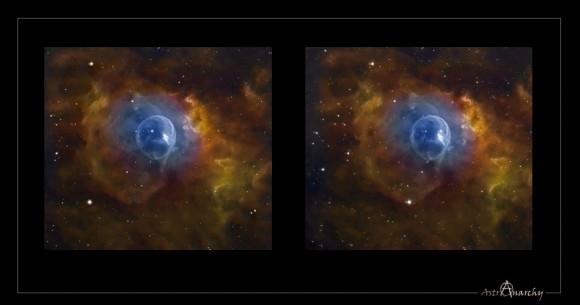
As the central star in NGC 7635 sheds its material, we can see it isn’t even and its appearance varies with the thickness of the surrounding gases. What appears to be cloud-like structures are very thick and illuminated by the star’s intense ultraviolet light. Believe it or not, it is here where the stellar “winds” blow the fastest and it won’t be long until these areas quickly erode. However, there is one feature that stands out more than any other – the “bubble-within-a-bubble”. What is it? It may be two distinct winds… Two distinct streamers of material colliding together.
“The bubble in NGC 7635 is the result of a fast stellar wind expanding into the interior of the larger H II region. However, the central star BD +60 2522 is appreciably offset (by about 1′) from the center of the bubble in the direction of the wall of the dense molecular cloud that defines this blister H II region.” says B.D. Moore (et al), “This offset is the result of evolution of the wind bubble into the density and pressure gradient established by the photoevaporative flow away from the cavity wall. The physical conditions around the bubble vary according to the medium into which the bubble is expanding. Away from the cavity wall the bubble is expanding into the low density interior of the H II region. Toward the wall, in the region of our images, the wind termination shock is very near the ionization front. The resulting physical structure, in which the photoevaporative flow away from the cloud wall is confined by the ram pressure of the wind.”
But, are we not seeing the proverbial forest because we’re too busy looking at the trees? “BD +60 is the ionizing star of NGC 7635, the so-called “Bubble Nebula”. NGC 7635 lies at the edge of a low-density clumpy molecular cloud and the nebula can be interpreted as a wind-blown bubble created by the interaction of the stellar wind of BD +60 with the ambient interstellar medium. While many investigations have focused on the nebula, little attention has been paid to the star itself.” says G. Rauw (et al), “Considerable progress in our understanding of the stellar winds of early-type stars has been achieved through extensive monitoring of their spectroscopic variability and the discovery that some of the cyclical variations could be related to a rotational modulation of the stellar wind. Since rotation is believed to shape the winds of Oef stars, these objects appear a priori as good candidates to search for a rotational wind modulation.”
Throughout their long term observing campaign, the group found strong profile variability on time scales of 2–3 days, variability on time scales of a few hours that might be related to non-radial pulsations, and even tentatively propose that the beating of several non-radial pulsation modes triggers transient large-scale density perturbations in a confined stellar wind that produce the 2–3 day time scale variability. “While this scenario could easily account for the lack of a single stable period (through the effect of the propagation velocity of the perturbation and the interplay of various clocks: pulsations, rotation…), it seems more difficult to explain the changing pattern of the TVS. For instance, if a density wave moves around the star, why would it not affect the absorption and the emission components in a similar manner?” says Rauw, “One possibility could be that the density perturbation affects the absorption column only as long as it remains close to the stellar surface whilst the impact on the emission lines would be larger when the perturbation has moved outwards, but this is admittedly still rather speculative.”
Just how common is it for a huge star to form a bubble around itself? “Massive stars evolve across the HR diagram, losing mass along the way and forming a variety of ring nebulae. During the main sequence stage, the fast stellar wind sweeps up the ambient interstellar medium to form an interstellar bubble. After a massive star evolves into a red giant or a luminous blue variable, it loses mass copiously to form a circumstellar nebula. As it evolves further into a WR star, the fast WR wind sweeps up the previous mass loss and forms a circumstellar bubble. Observations of ring nebulae around massive stars not only are fascinating, but also are useful in providing templates to diagnose the progenitors of supernovae from their circumstellar nebulae.” says You-Hua Chu of the University of Illinois Astronomy Department, “The fast stellar wind of a main sequence O star sweeps up the ambient interstellar medium (ISM) to form an interstellar bubble, which consists of a dense shell of interstellar material. Intuitively, we would expect around most O stars an interstellar bubble similar to the Bubble Nebula (NGC 7635) to be visible; however, hardly any O stars in HII regions have ring nebulae, suggesting that these interstellar bubbles are rare.”
Like a child chewing gum, the bubble will continue to expand. And what comes after the bubble? Why, the “bang” of course. And when it comes to a star going bang, than can only mean a supernova. “By pursuing the calculation through the various stages of massive star evolution, using a realistic mass loss history as input, we simulate the creation and evolution of a wind-blown bubble around the star up to the time of the supernova explosion.” says A. J. van Marle (et al), “The outflowing matter encounters an inner shock, where its velocity is reduced to nearly zero. The kinetic energy of the wind becomes thermal energy. This interaction creates a “hot bubble” of nearly stationary, hot gas. The thermal pressure of the hot bubble drives a shell into the surrounding interstellar medium. Here it is assumed, that the pressure driven shell will be restrained only by the ram pressure created by its own velocity and the density of the surrounding medium. This assumption is correct if we consider the surrounding medium to be cold. However, if we take photo-ionization into account the situation becomes rather more complicated. First of all, the photoionized gas will have a much higher pressure than the cold ISM. Therefore, the HII region will expand, driving a shell into the ISM. Second, the hot-bubble created by the stellar wind will now expand into a hot HII region, which means that the thermal pressure restraining the shell, will no longer be negligible compared to the ram pressure. A wind-blown bubble expanding into a compact HII region can be observed in NGC 7635.”
So how do we know when the final moments have come? “As the star ages, it becomes a red supergiant with a dense and slow wind. The number of ionizing photons drops. Therefore, the HII region disappears. Owing to the low density, recombination will take a long time, but radiative cooling will cause a decrease in thermal pressure. The hot wind-bubble, which keeps its high pressure, expands into the surrounding gas, creating a new shell. A third shell appears close to the star, as the drop in ram pressure from the RSG wind causes the wind bubble to expand inward, sweeping up the wind material.” say van Marle, “The presence of an expanding HII region changes the density structure of the nebula during the main sequence. Our main goal at this time is to simulate the circumstellar environment of stars between 25 M and 40 M at the time of the supernova explosion.”
Magic bubbles? Just stay out of the way when they pop!
Many thanks to JP Metsavainio of Northern Galactic for his magical personal image and allowing us this incredible look at distant beauty!

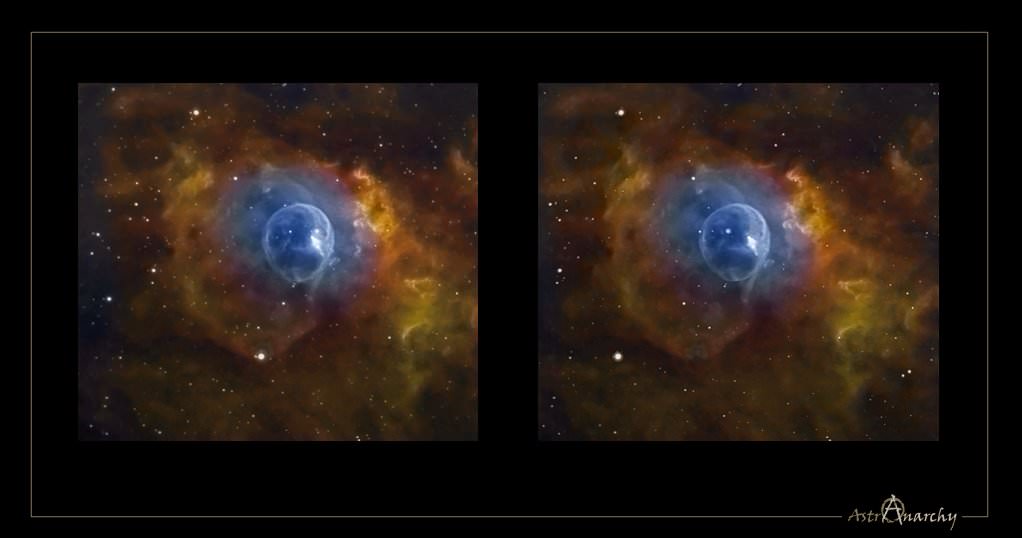
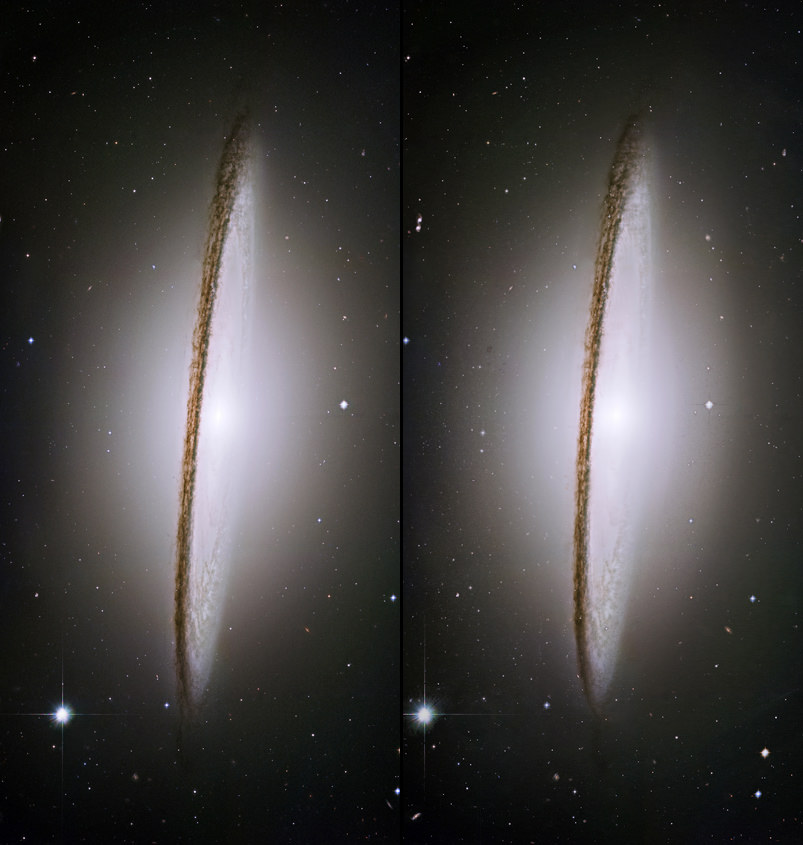
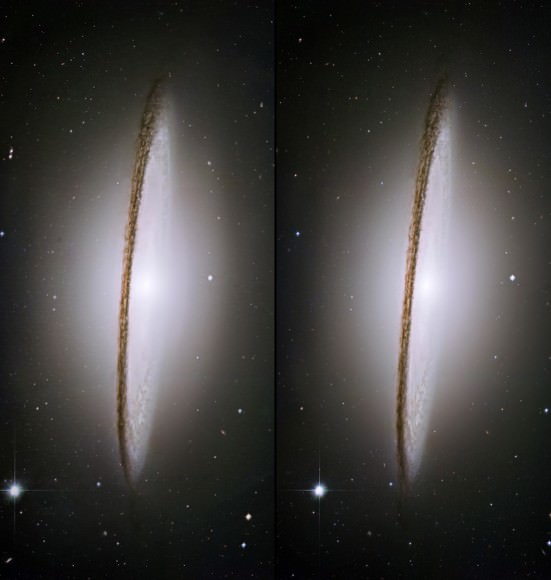
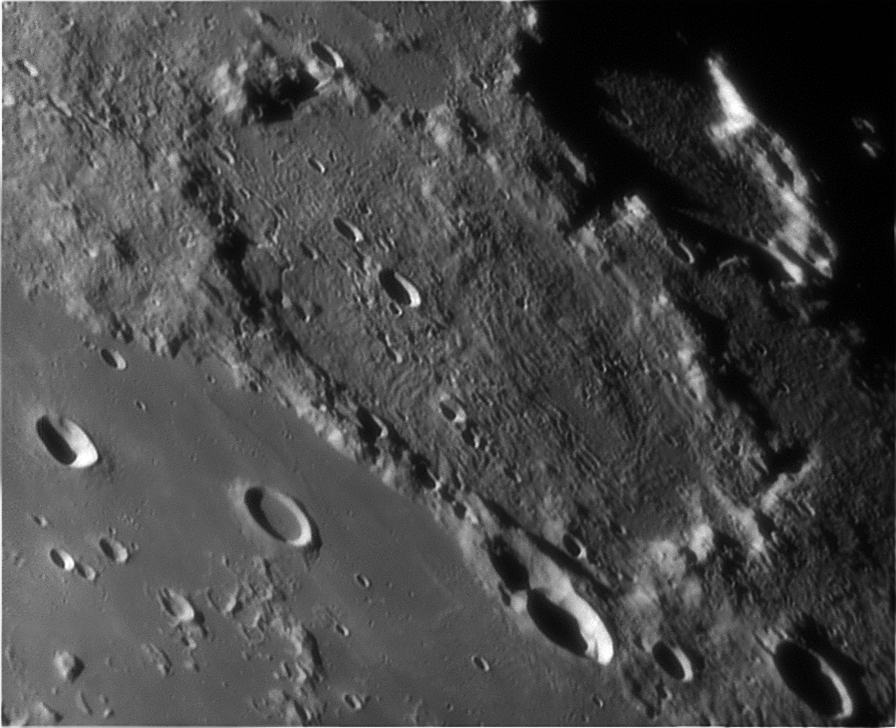
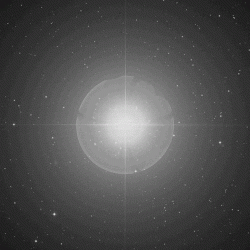
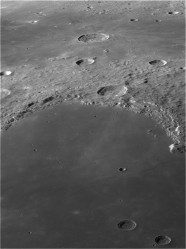

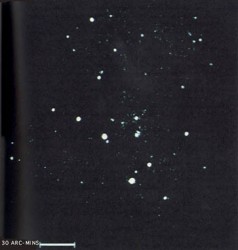

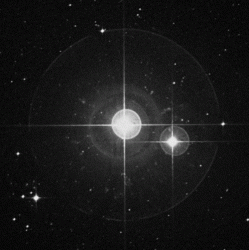
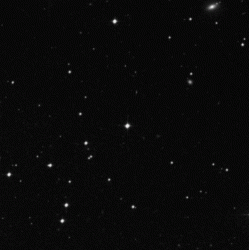
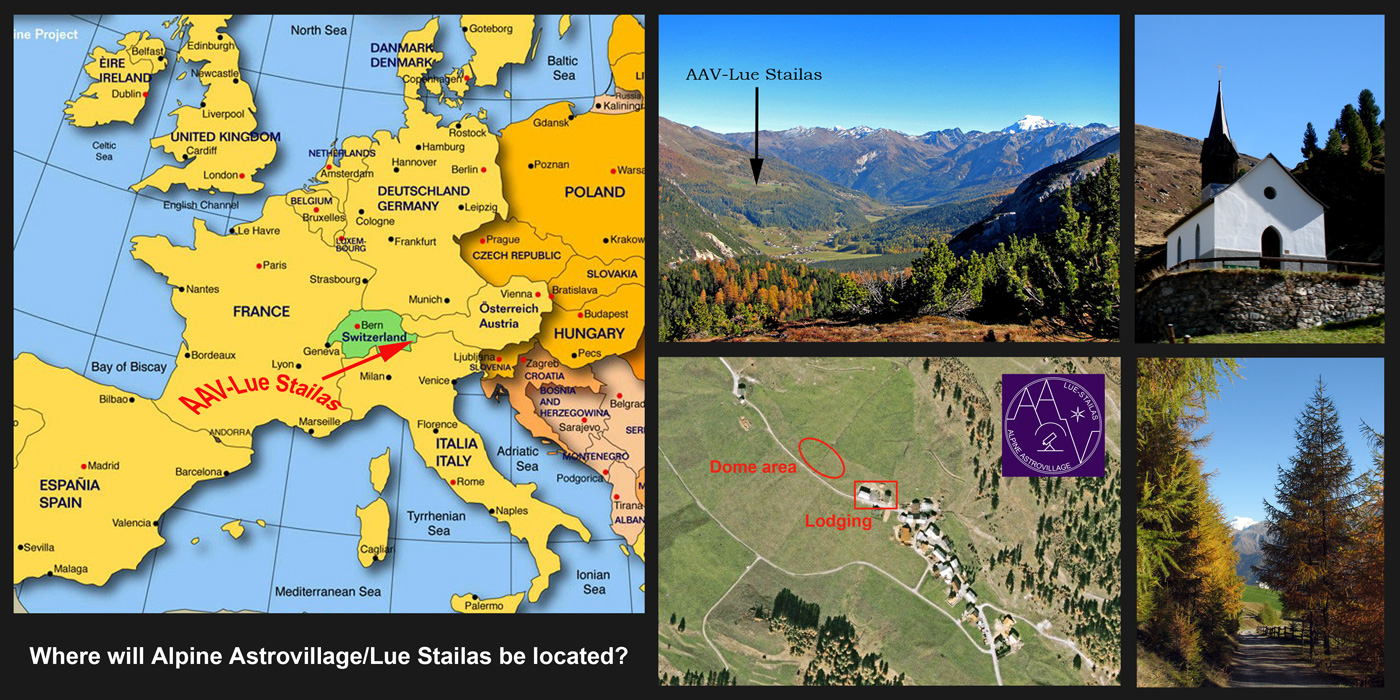
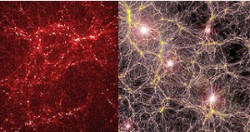
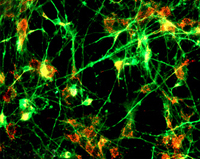
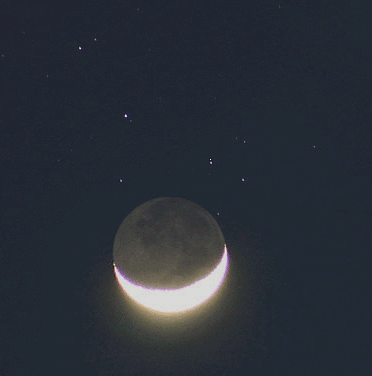 Sure. For those of us who hang around the night sky, we know the Pleiades and the Moon frequently venture near each other during the course of a year, but it’s much less common for the Moon to be in a crescent phase when they visit. Because the light of the nearby Moon often overpowers the cool, blue star cluster M45, SkyWatchers rarely have the opportunity to see the Moon sedately cover its stars. Not this time…
Sure. For those of us who hang around the night sky, we know the Pleiades and the Moon frequently venture near each other during the course of a year, but it’s much less common for the Moon to be in a crescent phase when they visit. Because the light of the nearby Moon often overpowers the cool, blue star cluster M45, SkyWatchers rarely have the opportunity to see the Moon sedately cover its stars. Not this time…